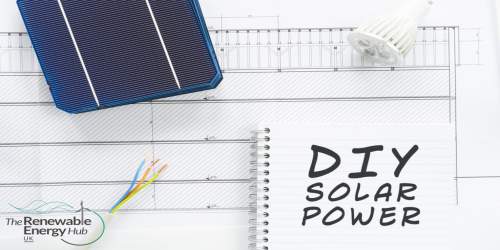In a hopeful new development, Chancellor Kwasi Kwarteng is planning to lift the de facto ban on installing new onshore wind turbines in the U.K. Now more than ever, the U.K. needs to focus on producing its own power as Russia wields energy like a weapon. Lifting the onshore wind ban will help meet the U.K.’s energy needs.
What Is Onshore Wind?
There are two types of wind turbines – onshore and offshore. Onshore wind turbines are placed on land, while offshore turbines are located offshore in the ocean, often so far out that people can’t see or hear them. Both generate renewable energy via wind.
Onshore turbines are cheaper and easier to build, although they generate slightly less power. They’re also closer to the communities in need of electricity. This cuts down on energy transportation costs.
COMPARE PRICES FROM LOCAL INSTALLERS
Compare prices from local companies fast & free
Enter your postcode to compare quotes from leading professionals. We promise to keep your information Safe & Secure. Privacy Policy
The 2016 Ban
Six years ago, in a misguided effort to appease fellow Tories, former Prime Minister David Cameron effectively banned the development of new onshore wind turbines. He did so by ending the subsidies for onshore wind farms, without which they couldn’t make a profit. The result was that the wind turbines awaiting planning permission couldn’t be built.
Now, Chancellor Kwarteng is planning to undo the ban that makes it difficult for wind farms to get planning permission. This effectively gives wind farms the go-ahead to start building onshore turbines again.
The Debate About Wind Energy
Wind turbines are a divisive issue, with many people opposed to them due to their strong visual presence and noise levels, while others point out the benefits of renewable energy.
Opponents of Wind Power
On one end of the spectrum are people who want nothing to do with wind turbines. They cite the fact that turbines are loud, unsightly, and a potential threat to birds and bats. Some homeowners say that the intermittent, oscillating shadows of the blades over their house create a kind of strobe effect when the sun is at a certain angle, which is a nuisance.
However, a 2022 survey found that 74% of the public in the U.K. supports onshore wind. Kwarteng’s decision to reverse Cameron’s onshore wind ban is a popular one.
If wind turbines can be situated in out-of-the-way areas to minimize disruption to the landscape and human activity, more people will probably get on board with the idea.
Proponents of Wind Power
Conservatives in the U.K. are largely in favor of wind turbines. Because wind energy is sustainable, it’s a great long-term solution to the problem of dwindling oil and natural gas reserves, and it’s also better for the planet.
Plus, it reduces the U.K.’s dependence on foreign oil, which is crucial during Russia’s invasion of Ukraine. This also protects people from the effects of fluctuating gas prices and workers from the potential dangers of oil rig work and flammable petrochemical vapors.
Overall, since most people in the U.K. are in favor of wind farms and there’s a strong worldwide movement to go green, proponents of the technology will probably win out.
Meeting the UK’s Energy Needs
Transport is the biggest energy consumption sector in the U.K. The U.K. is the third largest consumer of electricity in Europe, and in 2020, fossil fuels still made up 75% of its total energy supply and 77% of the total energy demand. There’s a lot of room for improvement when it comes to using renewable energy.
Therefore, lifting the onshore wind ban has enormous potential to help meet the U.K.’s energy needs.
Powering the Future
Though a minority of the U.K. population is not in favor of onshore wind farms, most people agree that the turbines are paving the way to a greener future, with less dependence on foreign oil and dirty energy extraction methods. Chancellor Kwasi Kwarteng’s move to lift the onshore wind ban is a sign that, like it or not, wind power is here to stay.
By Jane Marsh










